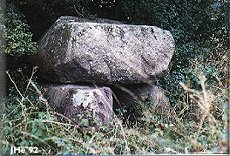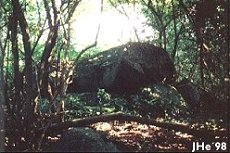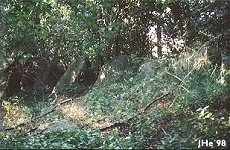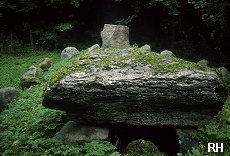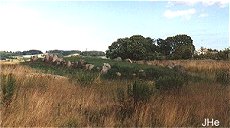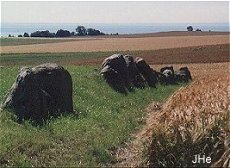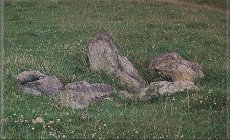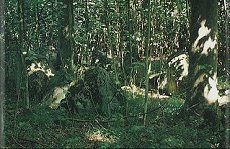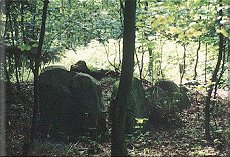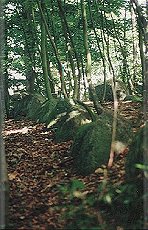insula-moenia.dk

insula-moenia.dk

The most spectacular long barrow on Møn is without a doubt Grønsalen, near Fanefjord Church. With it´s 100 meters and 145 big border-stones it is hard to miss when driving by!
Take a look at the long barrows and try to imagine the hard work it took to raise those stones without any modern technology!
It is 10 meters wide and with its length of 100 meters it is without a doubt Denmark's longest burial ground. 145 enormous stones encircles the barrow. Inside the barrow there is three chambers, whereof only the one to the west has a coverstone.
"Grønsalen" also called "Grønjægers Høj" or "Faneshøj" is situated near Hårbølle, south of Fanefjord Church.
Behind the name "Grønjægers Høj" we will find the legend of the hunter and king: Grøn Jæger. He ruled this part of the island as Klintekongen (King of the Cliff) ruled over the higher parts of Møn. It is believe that this long barrow is his and his wife queen Fanes burial ground. Queen Fane also lent her name to Fanefjorden.
The long barrow was examined in 1810 by bishop Münter and was protected by law after that. Even though it had been protected by law it was on the verge of being destroyed, there were made attempts of "buying" the graves so that the farmers would let them be, but some farmers was not keen on putting anything into writing and only made oral promisses that could be broken very easy.
It was build around the year 1800 by Marienborgs owner at that time de la Calmette and was build as a copy of a
real long barrow, and real stoneage graves in the area was used to build the copy. It has even mistaken for a
real stoneage long barrow by researchers which measured and recorded it as a real monument. It has even been
protected by law as a National monument!
It is said that the long barrow and the Bautastone is a copy of the Røddinge Kings grave. The
Røddinge King or King Rød was a giant living at Ulvsund. It is said that the cover stone came from
his actual grave which was situated on Røddinge Mark(=field). It is not Klekkendehøj but a grave
situated not far from it. The bautastone has been taken from Askeby Mark(=field), where it still was standing
upright in 1789. Calmette had to use 16 pairs of horses to get the stone from its origin to Marienborg. The
broken bautastone at the end of the long barrow has also be taken from some other place.
Calmette died in 1803 and was Møns first ancient researcher / archeologist and it was his collection of ancient artifacts, which became to be some of the first things in the big collection of today at the National Museum in Copenhagen.
The long barrow is situated in the forest near the manor in Damsholte.
Klinteskoven, on the roadside between Trylledansen and Karensby: Long Barrow.
Remains of a Long Barrow. Only a few stones are left on a mound visible from the road. (Observation by
Joachim Henkel)
Lilleskov: Long Barrow.
Nylukke Skov, south of Marienborg: Long Barrow.
A small Mound with no more than a handful of stones on its sides and 3 moulds on top. (Observation by
Joachim Henkel)


